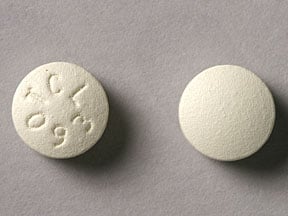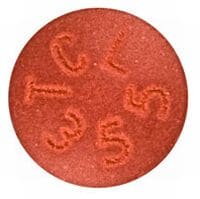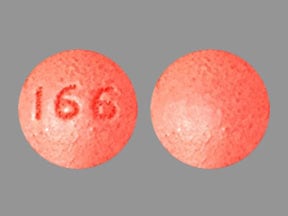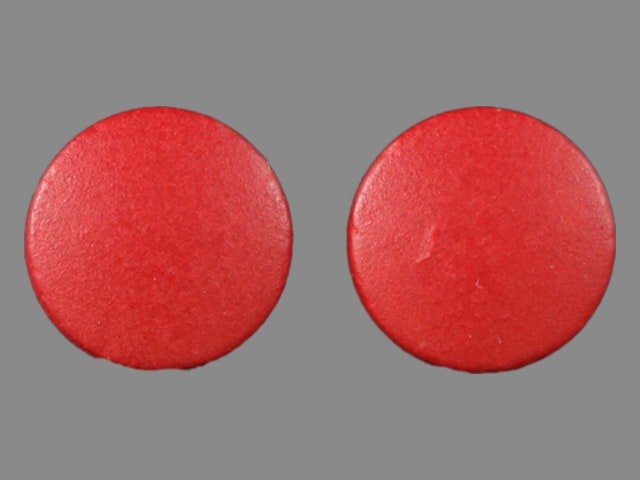Dosage Forms
Excipient information presented when available (limited, particularly for generics); consult specific product labeling. [DSC] = Discontinued product
Elixir, Oral:
FeroSul: 220 (44 Fe) MG/5ML (473 mL [DSC]) [contains alcohol, usp, fd&c yellow #6 (sunset yellow), propylene glycol, saccharin sodium, sodium benzoate; lemon flavor]
Iron Supplement: 220 (44 Fe) MG/5ML (473 mL) [contains fd&c yellow #6 (sunset yellow), sodium benzoate]
Generic: 220 (44 Fe) MG/5ML (473 mL)
Liquid, Oral:
Generic: 220 (44 Fe) MG/5ML (473 mL [DSC])
Solution, Oral:
BProtected Pedia Iron: 75 (15 Fe) MG/ML (50 mL) [alcohol free, gluten free; contains sodium metabisulfite; citrus flavor]
Fer-In-Sol: 75 (15 Fe) MG/ML (50 mL) [contains alcohol, usp, sodium bisulfite]
Fer-Iron: 75 (15 Fe) MG/ML (50 mL [DSC]) [contains sodium metabisulfite; lemon flavor]
Iron Supplement Childrens: 75 (15 Fe) MG/ML (50 mL) [alcohol free, dye free, gluten free, lactose free; contains sodium bisulfite]
Generic: 75 (15 Fe) MG/ML (50 mL)
Syrup, Oral:
Generic: 300 (60 Fe) MG/5ML (5 mL)
Tablet, Oral:
FeroSul: 325 (65 Fe) MG [contains fd&c blue #2 aluminum lake, fd&c red #40 aluminum lake]
FeroSul: 325 (65 Fe) MG [contains fd&c red #40 aluminum lake, fd&c yellow #6 aluminum lake]
Ferro-Bob: 325 (65 Fe) MG [DSC]
Generic: 325 (65 Fe) MG
Tablet, Oral [preservative free]:
FerrouSul: 325 (65 Fe) MG [gluten free, sodium free; contains brilliant blue fcf (fd&c blue #1), fd&c blue #2 (indigotine), fd&c red #40, fd&c yellow #6 (sunset yellow)]
Generic: 325 (65 Fe) MG
Tablet Delayed Release, Oral:
Generic: 324 (65 Fe) MG, 325 (65 Fe) MG
Tablet Extended Release, Oral:
Slow Fe: 142 (45 Fe) MG [contains fd&c blue #1 aluminum lake, fd&c red #40 aluminum lake, fd&c yellow #6 aluminum lake]
Tablet Extended Release, Oral [preservative free]:
Slow Iron: 160 (50 Fe) MG [gluten free]
Generic: 140 (45 Fe) MG [DSC]
Pharmacology
Mechanism of Action
Replaces iron, found in hemoglobin, myoglobin, and other enzymes; allows the transportation of oxygen via hemoglobin
Pharmacokinetics/Pharmacodynamics
Absorption
Iron is absorbed in the duodenum and upper jejunum; in persons with normal serum iron stores, 10% of an oral dose is absorbed; this is increased to 20% to 30% in persons with inadequate iron stores. Food and achlorhydria will decrease absorption
Excretion
Urine, sweat, sloughing of the intestinal mucosa, and menses
Onset of Action
Hematologic response: Oral: ~3 to 10 days
Peak effect: Reticulocytosis: 5 to 10 days; hemoglobin increases within 2 to 4 weeks
Protein Binding
To transferrin
Use: Labeled Indications
Iron-deficiency anemia: Prevention and treatment of iron-deficiency anemias
Use: Off Label
Restless legs syndromecyes
Iron supplementation has been proposed as therapy for patients with restless legs syndrome (RLS) associated with low ferritin levels and is likely ineffective for other forms of RLS. Results are inconsistent among various forms of iron. Small controlled trials with oral ferrous sulfate have demonstrated varying effects.
Contraindications
Hypersensitivity to iron salts or any component of the formulation; hemochromatosis, hemolytic anemia
Dosage and Administration
Dosing: Adult
Note: Multiple concentrations of ferrous sulfate oral liquid exist; close attention must be paid to the concentration when ordering and administering ferrous sulfate; incorrect selection or substitution of one ferrous sulfate liquid for another without proper dosage volume adjustment may result in serious over- or underdosing. Immediate release oral iron products are preferred for treatment of iron deficiency anemia; enteric coated and slow/sustained release preparations are not desired due to poor absorption (Hershko 2014; Liu 2012). Doses are expressed in terms of elemental iron; ferrous sulfate contains ~20% elemental iron; ferrous sulfate exsiccated (dried) contains ~30% elemental iron.
Iron-deficiency anemia, prevention (in areas where anemia prevalence is ≥40%) (off-label use): Oral: Menstruating women (nonpregnant females of reproductive potential): 30 to 60 mg elemental iron/day for 3 consecutive months in a year (WHO 2016a).
Iron-deficiency anemia, treatment: Oral: 65 to 200 mg elemental iron/day (Liu 2012; Schrier 2019; Stoltzfus 1998; WHO 2001); may administer in up to 3 divided doses (depending on formulation). Note: Alternate-day dosing (eg, every other day or Monday, Wednesday, Friday) has been shown to result in greater absorption of iron; some experts recommend this dosing schedule in patients who can maintain adherence (Schrier 2019; Stoffel 2017).
Restless legs syndrome (off-label use): Oral: 65 mg elemental iron (325 mg ferrous sulfate) twice daily in combination with vitamin C in patients with a ferritin level ≤75 mcg/L (AAN [Winkelman 2016]).
Dosing: Geriatric
Lower doses (15 to 50 mg elemental iron/day) may have similar efficacy and less GI adverse events (eg, nausea, constipation) as compared to higher doses (eg, 150 mg elemental iron/day) (Rimon 2005).
Dosing: Pediatric
Note: Multiple concentrations of ferrous sulfate oral liquid exist; close attention must be paid to the concentration when ordering and administering ferrous sulfate; incorrect selection or substitution of one ferrous sulfate liquid for another without proper dosage volume adjustment may result in serious over- or underdosing.
Note: Doses expressed in terms of elemental iron; Ferrous sulfate contains ~20% elemental iron; ferrous sulfate exsiccated (dried) contains ~30% elemental iron
Iron deficiency anemia; prevention: Oral:
Infants ≥4 months (receiving human milk as only nutritional source or >50% as source of nutrition without iron fortified food): 1 mg iron/kg/day (Baker 2010); Note: In healthy, term infants, AAP does not recommend routine additional supplementation of iron be considered until at least 4 to 6 months of age if breastfed (full or partial) (Baker 2010; Schanler 2011)
Infants ≥6 months and Children <2 years in areas where anemia prevalence is >40%: 10 to 12.5 mg daily for 3 consecutive months in a year (WHO 2016b)
Children 2 years to <5 years in areas where anemia prevalence is >40%: 30 mg daily for 3 consecutive months in a year (WHO 2016b)
Children ≥5 to 12 years in areas where anemia prevalence is >40%: 30 to 60 mg daily for 3 consecutive months in a year (WHO 2016b)
Adolescent menstruating females (nonpregnant females of reproductive potential) in areas where anemia prevalence is >40%: 30 to 60 mg daily for 3 consecutive months in a year (WHO 2016a)
Treatment of iron deficiency: Infants, Children, and Adolescents: 3 to 6 mg/kg/day in 3 divided doses; suggested maximum daily dose: 200 mg/day (ASPEN [Corkins 2015]; Kliegman 2016)
Administration
Oral: Do not chew or crush extended-release preparations; administer with water or juice on an empty stomach.
Dietary Considerations
May be administered with food to prevent irritation; however, not with cereals, dietary fiber, tea, coffee, eggs, or milk.
Ferrous sulfate contains ~20% elemental iron (ie, 325 mg ferrous sulfate is equivalent to 65 mg elemental iron); ferrous sulfate exsiccated (dried) contains ~30% elemental iron.
Dietary sources of iron include beans, cereal (enriched), clams, beef, lentils, liver, oysters, shrimp, and turkey. Foods that enhance dietary absorption of iron include broccoli, grapefruit, orange juice, peppers, and strawberries. Foods that decrease dietary absorption of iron include coffee, dairy products, soy products, spinach, and tea.
Dietary reference intake (IOM 2001): Note: Dosage expressed in terms of elemental iron; ferrous sulfate contains ~20% elemental iron; ferrous sulfate exsiccated (dried) contains ~30% elemental iron.
0 to 6 months: 0.27 mg daily (adequate intake)
7 to 12 months: 11 mg daily
1 to 3 years: 7 mg daily
4 to 8 years: 10 mg daily
9 to 13 years: 8 mg daily
14 to 18 years: Males: 11 mg daily; Females: 15 mg daily; Pregnant females: 27 mg daily; Lactating females: 10 mg daily
19 to 50 years: Males: 8 mg daily; Females: 18 mg daily; Pregnant females: 27 mg daily; Lactating females: 9 mg daily
≥50 years: 8 mg daily
Storage
Iron is a leading cause of fatal poisoning in children. Store out of children's reach and in child-resistant containers.
Ferrous Sulfate Images
Drug Interactions
Alpha-Lipoic Acid: Iron Preparations may decrease the absorption of Alpha-Lipoic Acid. Alpha-Lipoic Acid may decrease the absorption of Iron Preparations. Consider therapy modification
Antacids: May decrease the absorption of Iron Preparations. Management: Separate dosing of oral iron preparations and antacids as much as possible to avoid decreased efficacy of iron preparation. If coadministered with antacids, monitor for decreased therapeutic effects of iron preparations. Consider therapy modification
Baloxavir Marboxil: Polyvalent Cation Containing Products may decrease the serum concentration of Baloxavir Marboxil. Avoid combination
Bictegravir: Iron Preparations may decrease the serum concentration of Bictegravir. Management: Bictegravir, emtricitabine, and tenofovir alafenamide can be administered with iron preparations under fed conditions, but coadministration with or 2 hours after an iron preparation is not recommended under fasting conditions. Consider therapy modification
Bisphosphonate Derivatives: Polyvalent Cation Containing Products may decrease the serum concentration of Bisphosphonate Derivatives. Management: Avoid administration of oral medications containing polyvalent cations within: 2 hours before or after tiludronate/clodronate/etidronate; 60 minutes after oral ibandronate; or 30 minutes after alendronate/risedronate. Exceptions: Pamidronate; Zoledronic Acid. Consider therapy modification
Cefdinir: Iron Preparations may decrease the serum concentration of Cefdinir. Red-appearing, non-bloody stools may also develop due to the formation of an insoluble iron-cefdinir complex. Management: Avoid concurrent cefdinir and oral iron when possible. Separating doses by several hours may minimize interaction. Iron-containing infant formulas do not appear to interact with cefdinir. Consider therapy modification
Deferiprone: Polyvalent Cation Containing Products may decrease the serum concentration of Deferiprone. Management: Separate administration of deferiprone and oral medications or supplements that contain polyvalent cations by at least 4 hours. Consider therapy modification
Dimercaprol: May enhance the nephrotoxic effect of Iron Preparations. Avoid combination
Dolutegravir: Iron Preparations may decrease the serum concentration of Dolutegravir. Management: Administer dolutegravir at least 2 hours before or 6 hours after oral iron. Administer dolutegravir/rilpivirine at least 4 hours before or 6 hours after oral iron. Alternatively, dolutegravir and oral iron can be taken together with food. Consider therapy modification
Eltrombopag: Polyvalent Cation Containing Products may decrease the serum concentration of Eltrombopag. Management: Administer eltrombopag at least 2 hours before or 4 hours after oral administration of any polyvalent cation containing product. Consider therapy modification
Entacapone: Iron Preparations may decrease the serum concentration of Entacapone. Management: Consider separating doses of the agents by 2 or more hours to minimize the effects of this interaction. Monitor for decreased therapeutic effects of levodopa during concomitant therapy, particularly if doses cannot be separated. Consider therapy modification
Ferric Hydroxide Polymaltose Complex: May decrease the serum concentration of Iron Preparations. Specifically, the absorption of oral iron salts may be reduced. Management: Do not administer intravenous (IV) ferric hydroxide polymaltose complex with other oral iron preparations. Therapy with oral iron preparations should begin 1 week after the last dose of IV ferric hydroxide polymaltose complex. Consider therapy modification
Histamine H2 Receptor Antagonists: May decrease the absorption of Iron Preparations. Monitor therapy
Levodopa: Iron Preparations may decrease the serum concentration of Levodopa. Only applies to oral iron preparations. Management: Consider separating doses of the agents by 2 or more hours to minimize the effects of this interaction. Monitor for decreased therapeutic effects of levodopa during concomitant therapy, particularly if doses cannot be separated. Consider therapy modification
Levothyroxine: Iron Preparations may decrease the serum concentration of Levothyroxine. Management: Separate oral administration of iron preparations and levothyroxine by at least 4 hours. Separation of doses is not required with parenterally administered iron preparations or levothyroxine. Consider therapy modification
Methyldopa: Iron Preparations may decrease the serum concentration of Methyldopa. Consider therapy modification
PenicillAMINE: Polyvalent Cation Containing Products may decrease the serum concentration of PenicillAMINE. Management: Separate the administration of penicillamine and oral polyvalent cation containing products by at least 1 hour. Consider therapy modification
Phosphate Supplements: Iron Preparations may decrease the absorption of Phosphate Supplements. Management: Administer oral phosphate supplements as far apart from the administration of an oral iron preparation as possible to minimize the significance of this interaction. Exceptions: Sodium Glycerophosphate Pentahydrate. Consider therapy modification
Proton Pump Inhibitors: May decrease the absorption of Iron Preparations. Monitor therapy
Quinolones: Iron Preparations may decrease the serum concentration of Quinolones. Management: Give oral quinolones at least several hours before (4 h for moxi- and sparfloxacin, 2 h for others) or after (8 h for moxi-, 6 h for cipro/dela-, 4 h for lome-, 3 h for gemi-, and 2 h for levo-, nor-, oflox-, pefloxacin, or nalidixic acid) oral iron. Exceptions: LevoFLOXacin (Oral Inhalation). Consider therapy modification
Raltegravir: Polyvalent Cation Containing Products may decrease the serum concentration of Raltegravir. Management: Administer raltegravir 2 hours before or 6 hours after administration of the polyvalent cations. Dose separation may not adequately minimize the significance of this interaction. Consider therapy modification
Tetracyclines: May decrease the absorption of Iron Preparations. Iron Preparations may decrease the serum concentration of Tetracyclines. Management: Avoid this combination if possible. Administer oral iron preparations at least 2 hours before, or 4 hours after, the dose of the oral tetracycline derivative. Monitor for decreased therapeutic effect of oral tetracycline derivatives. Exceptions: Eravacycline. Consider therapy modification
Trientine: Polyvalent Cation Containing Products may decrease the serum concentration of Trientine. Management: Avoid concomitant administration of trientine and oral products that contain polyvalent cations. If oral iron supplements are required, separate the administration by 2 hours. If other oral polyvalent cations are needed, separate administration by 1 hour. Consider therapy modification
Test Interactions
False-positive for blood in stool by the guaiac test
Adverse Reactions
>10%: Gastrointestinal: Darkening of stools (≤80%; Tolkien 2015), abdominal pain (≤70%; Tolkien 2015), heartburn (1% to 68%; Tolkien 2015), nausea (≤63%; Tolkien 2015), constipation (≤39%; Tolkien 2015), flatulence (≤36%; Tolkien 2015), vomiting (≤34%; Tolkien 2015), diarrhea (≤23%; Tolkien 2015)
<1%, postmarketing, and/or case reports: Abdominal discomfort (Tolkien 2015)
Warnings/Precautions
Disease-related concerns:
- Gastrointestinal disease: Avoid in patients with peptic ulcer, enteritis, or ulcerative colitis.
Concurrent drug therapy issues:
- Drug-drug interactions: Potentially significant interactions may exist, requiring dose or frequency adjustment, additional monitoring, and/or selection of alternative therapy. Consult drug interactions database for more detailed information.
Special populations:
- Blood transfusion recipients: Avoid in patients receiving frequent blood transfusions.
- Elderly: Anemia in the elderly is often caused by “anemia of chronic disease” or associated with inflammation rather than blood loss. Iron stores are usually normal or increased, with a serum ferritin >50 ng/mL and a decreased total iron binding capacity. Hence, the “anemia of chronic disease” is not secondary to iron deficiency but the inability of the reticuloendothelial system to reclaim available iron stores.
- Pediatric: Accidental overdose of iron-containing products is a leading cause of fatal poisoning in children under 6 years of age. Keep this product out of the reach of children. In case of accidental overdose call the poison control center immediately.
- Premature infants: Avoid use in premature infants until the vitamin E stores, deficient at birth, are replenished.
Dosage form specific issues:
- Oral iron formulations: Immediate release oral iron products are preferred for treatment of iron deficiency anemia; enteric coated and slow/sustained release preparations are not desired due to poor absorption (Hershko 2014; Liu 2012).
- Polysorbate 80: Some dosage forms may contain polysorbate 80 (also known as Tweens). Hypersensitivity reactions, usually a delayed reaction, have been reported following exposure to pharmaceutical products containing polysorbate 80 in certain individuals (Isaksson 2002; Lucente 2000; Shelley 1995). Thrombocytopenia, ascites, pulmonary deterioration, and renal and hepatic failure have been reported in premature neonates after receiving parenteral products containing polysorbate 80 (Alade 1986; CDC 1984). See manufacturer's labeling.
- Propylene glycol: Some dosage forms may contain propylene glycol; large amounts are potentially toxic and have been associated hyperosmolality, lactic acidosis, seizures, and respiratory depression; use caution (AAP 1997; Zar 2007).
Other warnings/precautions:
- Duration of therapy: Administration of iron for >6 months should be avoided except in patients with continuous bleeding or menorrhagia.
Monitoring Parameters
Iron deficient anemia: Hemoglobin and hematocrit; consider additional tests such as RBC count, RBC indices, serum ferritin, transferrin saturation, total iron-binding capacity, serum iron concentration, and erythrocyte protoporphyrin concentration (CDC 1998)
Cancer and chemotherapy-induced anemia: Serum iron, total iron-binding capacity, transferrin saturation, or ferritin levels (baseline and periodic) (Rizzo 2010)
CKD associated anemia (patients not on dialysis): To monitor response to iron therapy: Hemoglobin, serum ferritin, transferrin saturation (KDIGO 2013)
Pregnancy
Pregnancy Considerations
Maternal iron requirements increase during pregnancy. Adequate iron concentrations to the fetus can be maintained regardless of maternal iron status, except in severe cases of anemia (IOM 2001). Untreated iron deficiency and iron deficiency anemia (IDA) in a pregnant female may be associated with adverse events, including low birth weight, preterm birth, or increased perinatal mortality (ACOG 95 2008; IOM 2001; Pavord 2012).
In general, treatment of iron deficiency or IDA in pregnancy is the same as in non-pregnant females. The majority of studies note iron therapy improves maternal hematologic parameters; however, information related to clinical outcomes in the mother and neonate is limited (Peña-Rosas 2015; Reveiz 2011; Siu 2015). Oral preparations are generally sufficient; however, parenteral iron therapy may be used in females who cannot tolerate or will not take oral iron, in cases of severe iron deficiency, or when malabsorption is present (ACOG 95 2008; Pavord 2012). Ferrous sulfate has been evaluated in multiple studies as an iron supplement or for the treatment of IDA in pregnancy (Peña-Rosas 2015; Reveiz 2011). Enteric-coated and slow/sustained-release preparations may be less effective (ACOG 95 2008).
Patient Education
What is this drug used for?
- It is used to aid diet needs.
- It is used to treat or prevent low iron in the body.
- It may be given to you for other reasons. Talk with the doctor.
Frequently reported side effects of this drug
- Diarrhea
- Constipation
- Stool discoloration
- Lack of appetite
- Abdominal cramps
- Staining of mouth, teeth, or fillings
Other side effects of this drug: Talk with your doctor right away if you have any of these signs of:
- Black, tarry, or bloody stools
- Severe nausea
- Severe vomiting
- Severe abdominal pain
- Vomiting blood
- Signs of a significant reaction like wheezing; chest tightness; fever; itching; bad cough; blue skin color; seizures; or swelling of face, lips, tongue, or throat.
Note: This is not a comprehensive list of all side effects. Talk to your doctor if you have questions.
Consumer Information Use and Disclaimer: This information should not be used to decide whether or not to take this medicine or any other medicine. Only the healthcare provider has the knowledge and training to decide which medicines are right for a specific patient. This information does not endorse any medicine as safe, effective, or approved for treating any patient or health condition. This is only a brief summary of general information about this medicine. It does NOT include all information about the possible uses, directions, warnings, precautions, interactions, adverse effects, or risks that may apply to this medicine. This information is not specific medical advice and does not replace information you receive from the healthcare provider. You must talk with the healthcare provider for complete information about the risks and benefits of using this medicine.




